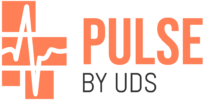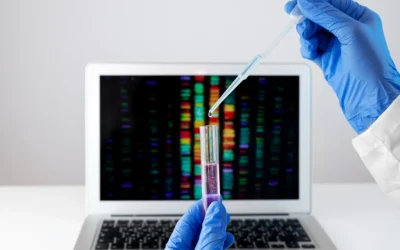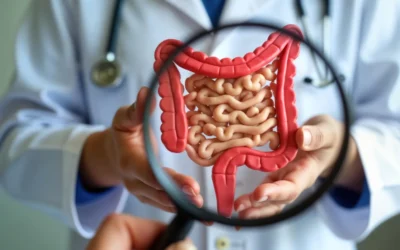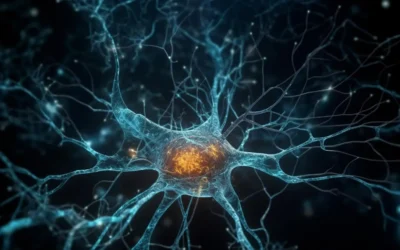Cancer remains one of the most pressing health challenges of our time. Globally, cancer causes nearly 10 million deaths annually, making early detection a critical factor in survival and quality of life (World Health Organization, 2024). While medical advancements in cancer screening technologies have enabled physicians to detect many cancers at earlier, more treatable stages, the power of these tools is often undermined by widespread myths and misconceptions.
Whether it’s fear of the procedure, misconceptions about risk, or distrust in screening outcomes, these myths can significantly delay diagnosis and treatment. The COVID-19 pandemic only worsened this trend. According to the CDC, cancer diagnoses dropped by nearly 30% in early 2020, largely due to postponed screenings (Knudsen, 2023). This delay has created a looming crisis of late-stage cancer diagnoses, which are harder and more expensive to treat.
This article aims to debunk five prevalent cancer screening myths using recent scientific evidence and authoritative health insights. Understanding the truth behind these misconceptions could mean the difference between early intervention and a diagnosis that comes too late.
In This Article
Understanding the Role of Cancer Screenings
Cancer screening refers to medical tests performed on individuals without symptoms to detect cancer or precancerous conditions. Its primary purpose is to identify the disease at an early stage—before symptoms arise—when it is most treatable and survival rates are highest.
Screening recommendations vary depending on cancer type, age, gender, genetic predisposition, and individual risk factors. Common cancer screenings include:
- Mammograms for breast cancer
- Colonoscopy and FIT tests for colorectal cancer
- Pap smears and HPV tests for cervical cancer
- Low-dose CT scans for lung cancer (especially in smokers)
- PSA tests for prostate cancer
These tests have proven life-saving potential. For example, early detection through mammography has contributed to a 40% decline in breast cancer mortality since the late 1980s (American Cancer Society, 2024).
Myth #1: You Only Need Screening if You Have Symptoms
The Truth: Waiting for Symptoms Can Be Fatal
A pervasive myth is that cancer screenings are unnecessary unless symptoms appear. This belief ignores a fundamental characteristic of many cancers: they are often asymptomatic in their early stages.
For instance, colorectal cancer can silently grow for years before triggering symptoms like bleeding or changes in bowel habits. By the time symptoms appear, the cancer may already be at an advanced stage. A study published in CA: A Cancer Journal for Clinicians showed that colorectal cancers found through routine screening are 60% more likely to be in stage I or II compared to those found after symptoms present (Siegel et al., 2024).
The same holds true for cervical, prostate, and breast cancers. Detecting cancer early dramatically increases treatment success and survival rates. The bottom line is this: screening is a proactive step, not a reactive one.
Myth #2: Biopsies Can Spread Cancer Cells
The Truth: Biopsies Are Safe and Essential for Accurate Diagnosis
This myth has lingered for decades and remains a barrier to diagnosis. Some believe that inserting a needle or scalpel into a tumor might “release” cancer cells into the body, accelerating its spread.
However, numerous studies have demonstrated that biopsies, when performed correctly, do not cause metastasis. According to the Mayo Clinic and the National Cancer Institute, the risk of a biopsy spreading cancer is “virtually nonexistent” with modern techniques (NCI, 2024).
A 2015 study in Gut assessed this concern in pancreatic cancer patients and found no increased risk of metastasis from biopsies (Ngamruengphong et al., 2015). Similarly, in breast cancer, needle biopsies are considered the gold standard and are routinely performed without complication.
Biopsies remain crucial for identifying cancer type, grade, and the appropriate treatment plan. Fearing the procedure could mean delaying or missing a life-saving diagnosis.
Myth #3: Cancer Screenings Often Produce False Positives, Leading to Unnecessary Stress and Procedures
The Truth: Screening Accuracy Is High—And Early Detection Saves Lives
While no test is 100% accurate, the notion that cancer screenings frequently lead to false positives is misleading. In reality, the positive predictive value of most cancer screenings—especially when used appropriately and repeated over time—is high.
Take mammography, for example. According to the U.S. Preventive Services Task Force (USPSTF), while about 10% of women are called back after a mammogram, less than 1% actually have cancer. This may seem like a high recall rate, but it allows physicians to rule out cancer and catch cases early when necessary.
To better understand screening test accuracy, consider the following simplified table:
Table 1: Sensitivity and Specificity of Common Cancer Screenings
| Cancer Type | Screening Test | Sensitivity | Specificity |
|---|---|---|---|
| Breast | Mammogram | 87% | 89% |
| Colorectal | FIT Test | 74% | 95% |
| Colorectal | Colonoscopy | ~95% | ~90% |
| Cervical | Pap + HPV Co-test | >95% | >90% |
| Lung (high-risk) | Low-dose CT Scan | 93% | 73% |
| Prostate | PSA Test | 21–91%* | ~91% |
* PSA test sensitivity varies widely based on the cutoff value used and individual risk factors (U.S. Preventive Services Task Force, 2023).
False positives do occur, but the small emotional cost is outweighed by the enormous benefit of detecting cancer early. Importantly, positive results often lead to more specific confirmatory testing, not immediate treatment.
Myth #4: No Family History Means I’m Not at Risk—So I Don’t Need Genetic Testing or Screening
The Truth: Most Cancers Are Sporadic, Not Hereditary
It’s a dangerous assumption that only those with a family history of cancer need to be screened or tested. In reality, only 5–10% of cancers are linked to inherited genetic mutations (CDC, 2024). The vast majority are considered sporadic, meaning they arise due to environmental factors, lifestyle, aging, or random cellular mutations.
Moreover, family history is often incomplete or unknown. Some individuals may be unaware of their genetic risk due to lack of family medical records or because the mutation hasn’t yet manifested in prior generations. For example, individuals of Ashkenazi Jewish descent have a 1 in 40 chance of carrying a BRCA mutation, regardless of family history (JScreen, 2024).
Recent guidelines recommend genetic counseling and potential testing not just based on family history, but also on ethnicity, personal medical history, and cancer type. This includes women diagnosed with breast cancer under age 50 or men with metastatic prostate cancer.
Myth #5: Cancer Screening Technologies Cause More Harm Than Good (e.g., Radiation, Overdiagnosis)
The Truth: The Benefits Far Outweigh the Minimal Risks
Concerns over radiation exposure, unnecessary treatments, or overdiagnosis have prompted some individuals to avoid cancer screening altogether. However, the actual risks associated with modern screening technologies are extremely low.
Let’s take mammography as an example. A single mammogram exposes a woman to about 0.4 millisieverts (mSv) of radiation. For comparison, a round-trip flight from New York to London exposes travelers to 0.1 mSv, and the average person in the U.S. receives about 3 mSv of background radiation annually (FDA, 2024).
Table 2: Radiation Dose Comparison
| Source | Radiation Dose (mSv) |
|---|---|
| Mammogram | 0.4 |
| Chest X-ray | 0.1 |
| CT scan (abdomen and pelvis) | 10 |
| Annual background radiation (U.S.) | 3 |
| NY–London round-trip flight | 0.1 |
Overdiagnosis—detecting cancers that may never become life-threatening—is a valid consideration but affects only certain types of cancer (e.g., some prostate or thyroid cancers). That said, early diagnosis still gives patients more control over their treatment choices.
The current consensus among public health agencies is clear: screening saves lives. Avoiding screening due to minimal risks means forfeiting the chance at early detection, when cancer is most curable.
The Cost of Delayed Screenings: A Public Health Concern
The COVID-19 pandemic underscored the consequences of delayed cancer screenings. Between March and June 2020, screening rates for breast, cervical, and colorectal cancers fell by over 80% in some regions (Cheng, 2023). The ripple effect has been a surge in late-stage diagnoses, more aggressive treatment protocols, and increased mortality projections.
The National Cancer Institute estimates that pandemic-related screening delays could result in an additional 10,000 deaths from breast and colorectal cancer over the next decade (Cheng, 2023). These sobering statistics highlight the importance of returning to routine preventive care.
Actionable Takeaways: Protecting Your Health
Timely cancer screening is a proven, evidence-based way to detect cancer early and improve survival rates. Here’s how you can take control:
- Know your screening schedule: Follow age- and risk-based guidelines from trusted authorities like the CDC or American Cancer Society.
- Ask your provider about your risk: Personalize your plan by discussing your medical history, ethnicity, and lifestyle.
- Don’t wait for symptoms: Asymptomatic cancers can be deadly. Screening is about prevention—not reaction.
- Dispel myths within your circle: Share accurate, science-backed information with friends and family.
- Keep up with follow-ups: If your test results are inconclusive or borderline, follow up promptly.
Conclusion
Myths around cancer screening persist, fueled by misinformation, fear, and misunderstanding. Unfortunately, these myths carry real consequences—delayed diagnoses, limited treatment options, and higher mortality rates. But knowledge is power.
By debunking five common cancer screening myths, this article underscores the urgency and value of early detection. Modern screening methods are safe, effective, and increasingly precise. The risks are minimal, but the rewards—early diagnosis, better outcomes, longer life—are immeasurable.
Ultimately, proactive screening is not just about checking a box on your health list; it’s about investing in your future. Let’s move beyond fear and fiction, and instead, embrace the facts that can save lives.
References
- American Cancer Society. (2024). Cancer Screening Guidelines. https://www.cancer.org/healthy/find-cancer-early.html
- Centers for Disease Control and Prevention (CDC). (2024). Cancer and Genetic Testing. https://www.cdc.gov/genomics/resources/diseases/cancer.htm
- Cheng, I. (2023). Impact of the COVID-19 Pandemic on Cancer Screening Delays. International Journal of Environmental Research and Public Health, 20(1), 10001. https://pmc.ncbi.nlm.nih.gov/articles/PMC10256430/
- JScreen. (2024). 7 Myths About Hereditary Cancer Screening. https://www.jscreen.org/blog/7-myths-about-hereditary-cancer-screening
- Knudsen, K. E. (2023). New Cancer Diagnoses Fell Abruptly Early in the COVID-19 Pandemic. CDC Media Release. https://www.cdc.gov/media/releases/2023/p0927-cancer-diagnosis.html
- Ngamruengphong, S., et al. (2015). Risk of Tumor Seeding with Endoscopic Ultrasound-Guided Fine-Needle Aspiration of Pancreatic Cancer: A Systematic Review and Meta-analysis. Gut, 64(8), 1253–1258. https://gut.bmj.com/content/64/8/1253
- U.S. Preventive Services Task Force. (2023). Screening Recommendations. https://www.uspreventiveservicestaskforce.org










0 Comments